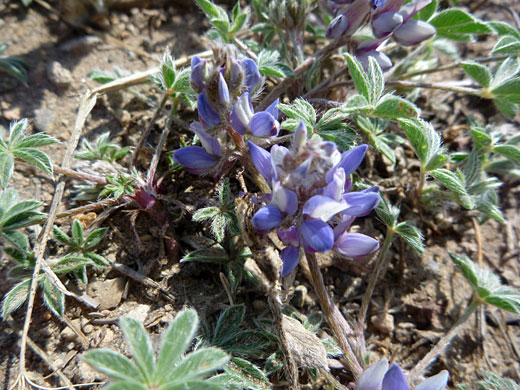Common name:
Dwarf lupine
Family:
Scientific name:
Lupinus lepidus
Main flower color:
Range:
The Pacific states
Height:
Up to 2 feet
Habitat:
Rocky places, dry meadows, up to 13,000 feet
Leaves:
Divided into between 5 and 8 leaflets, each between 0.2 and 1.5 inches long
Season:
June to August
Lupinus lepidus is a changeable species, with at least six recognized varieties, (confertus, culbertsonii, lobbii, ramosos, sellulus, utahensis), some quite different in appearance. Plants can be essentially stemless, with basal leaves and a flower stalk a few inches high, or have stems of up to two feet, growing upwards or along the ground. Plants are always hairy, often densely so. Leaves are predominantly basal.
Flowers are clustered together on the upper section of the stem (up to ten inches), attached by very short stalks. Stalks have a persistent bract at the base. The hairy calyx has two lips; the upper can be entire or two-lobed, while the lower is entire or three-lobed. Petal color ranges from nearly all white to dark blue and purple. The back of the banner petal and the lower margin of the keel petal both lack hairs, while the upper keel margins are ciliate.
Flowers are clustered together on the upper section of the stem (up to ten inches), attached by very short stalks. Stalks have a persistent bract at the base. The hairy calyx has two lips; the upper can be entire or two-lobed, while the lower is entire or three-lobed. Petal color ranges from nearly all white to dark blue and purple. The back of the banner petal and the lower margin of the keel petal both lack hairs, while the upper keel margins are ciliate.
All Contents © Copyright The American Southwest | Comments and Questions | Contribute | Site Map




